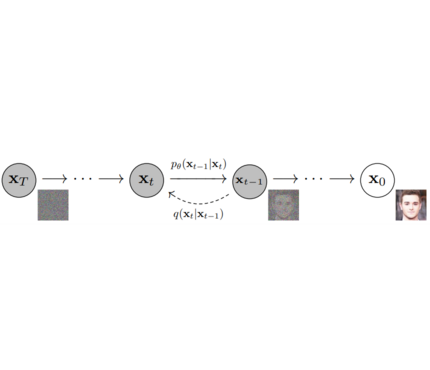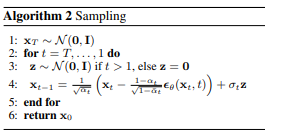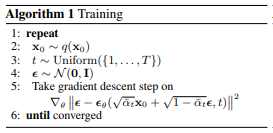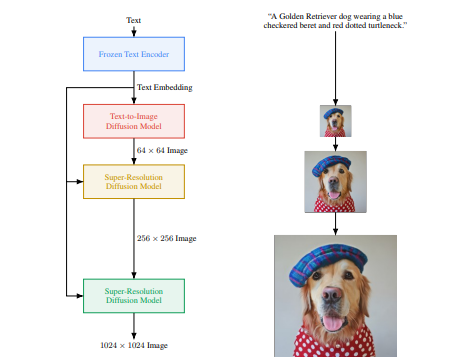

🤗 Diffusers provides pretrained diffusion models across multiple modalities, such as vision and audio, and serves as a modular toolbox for inference and training of diffusion models. More precisely, 🤗 Diffusers offers: - State-of-the-art diffusion pipelines that can be run in inference with just a couple of lines of code (see [src/diffusers/pipelines](https://github.com/huggingface/diffusers/tree/main/src/diffusers/pipelines)). - Various noise schedulers that can be used interchangeably for the prefered speed vs. quality trade-off in inference (see [src/diffusers/schedulers](https://github.com/huggingface/diffusers/tree/main/src/diffusers/schedulers)). - Multiple types of models, such as UNet, that can be used as building blocks in an end-to-end diffusion system (see [src/diffusers/models](https://github.com/huggingface/diffusers/tree/main/src/diffusers/models)). - Training examples to show how to train the most popular diffusion models (see [examples](https://github.com/huggingface/diffusers/tree/main/examples)). ## Definitions **Models**: Neural network that models $p_\theta(\mathbf{x}_{t-1}|\mathbf{x}_t)$ (see image below) and is trained end-to-end to *denoise* a noisy input to an image. *Examples*: UNet, Conditioned UNet, 3D UNet, Transformer UNet  **Schedulers**: Algorithm class for both **inference** and **training**. The class provides functionality to compute previous image according to alpha, beta schedule as well as predict noise for training. *Examples*: [DDPM](https://arxiv.org/abs/2006.11239), [DDIM](https://arxiv.org/abs/2010.02502), [PNDM](https://arxiv.org/abs/2202.09778), [DEIS](https://arxiv.org/abs/2204.13902)   **Diffusion Pipeline**: End-to-end pipeline that includes multiple diffusion models, possible text encoders, ... *Examples*: GLIDE, Latent-Diffusion, Imagen, DALL-E 2  ## Philosophy - Readability and clarity is prefered over highly optimized code. A strong importance is put on providing readable, intuitive and elementary code design. *E.g.*, the provided [schedulers](https://github.com/huggingface/diffusers/tree/main/src/diffusers/schedulers) are separated from the provided [models](https://github.com/huggingface/diffusers/tree/main/src/diffusers/models) and provide well-commented code that can be read alongside the original paper. - Diffusers is **modality independent** and focusses on providing pretrained models and tools to build systems that generate **continous outputs**, *e.g.* vision and audio. - Diffusion models and schedulers are provided as consise, elementary building blocks whereas diffusion pipelines are a collection of end-to-end diffusion systems that can be used out-of-the-box, should stay as close as possible to their original implementation and can include components of other library, such as text-encoders. Examples for diffusion pipelines are [Glide](https://github.com/openai/glide-text2im) and [Latent Diffusion](https://github.com/CompVis/latent-diffusion). ## Quickstart ### Installation ``` pip install diffusers # should install diffusers 0.0.4 ``` ### 1. `diffusers` as a toolbox for schedulers and models `diffusers` is more modularized than `transformers`. The idea is that researchers and engineers can use only parts of the library easily for the own use cases. It could become a central place for all kinds of models, schedulers, training utils and processors that one can mix and match for one's own use case. Both models and schedulers should be load- and saveable from the Hub. For more examples see [schedulers](https://github.com/huggingface/diffusers/tree/main/src/diffusers/schedulers) and [models](https://github.com/huggingface/diffusers/tree/main/src/diffusers/models) #### **Example for [DDPM](https://arxiv.org/abs/2006.11239):** ```python import torch from diffusers import UNetModel, DDPMScheduler import PIL import numpy as np import tqdm generator = torch.manual_seed(0) torch_device = "cuda" if torch.cuda.is_available() else "cpu" # 1. Load models noise_scheduler = DDPMScheduler.from_config("fusing/ddpm-lsun-church", tensor_format="pt") unet = UNetModel.from_pretrained("fusing/ddpm-lsun-church").to(torch_device) # 2. Sample gaussian noise image = torch.randn( (1, unet.in_channels, unet.resolution, unet.resolution), generator=generator, ) image = image.to(torch_device) # 3. Denoise num_prediction_steps = len(noise_scheduler) for t in tqdm.tqdm(reversed(range(num_prediction_steps)), total=num_prediction_steps): # predict noise residual with torch.no_grad(): residual = unet(image, t) # predict previous mean of image x_t-1 pred_prev_image = noise_scheduler.step(residual, image, t) # optionally sample variance variance = 0 if t > 0: noise = torch.randn(image.shape, generator=generator).to(image.device) variance = noise_scheduler.get_variance(t).sqrt() * noise # set current image to prev_image: x_t -> x_t-1 image = pred_prev_image + variance # 5. process image to PIL image_processed = image.cpu().permute(0, 2, 3, 1) image_processed = (image_processed + 1.0) * 127.5 image_processed = image_processed.numpy().astype(np.uint8) image_pil = PIL.Image.fromarray(image_processed[0]) # 6. save image image_pil.save("test.png") ``` #### **Example for [DDIM](https://arxiv.org/abs/2010.02502):** ```python import torch from diffusers import UNetModel, DDIMScheduler import PIL import numpy as np import tqdm generator = torch.manual_seed(0) torch_device = "cuda" if torch.cuda.is_available() else "cpu" # 1. Load models noise_scheduler = DDIMScheduler.from_config("fusing/ddpm-celeba-hq", tensor_format="pt") unet = UNetModel.from_pretrained("fusing/ddpm-celeba-hq").to(torch_device) # 2. Sample gaussian noise image = torch.randn( (1, unet.in_channels, unet.resolution, unet.resolution), generator=generator, ) image = image.to(torch_device) # 3. Denoise num_inference_steps = 50 eta = 0.0 # <- deterministic sampling for t in tqdm.tqdm(reversed(range(num_inference_steps)), total=num_inference_steps): # 1. predict noise residual orig_t = noise_scheduler.get_orig_t(t, num_inference_steps) with torch.inference_mode(): residual = unet(image, orig_t) # 2. predict previous mean of image x_t-1 pred_prev_image = noise_scheduler.step(residual, image, t, num_inference_steps, eta) # 3. optionally sample variance variance = 0 if eta > 0: noise = torch.randn(image.shape, generator=generator).to(image.device) variance = noise_scheduler.get_variance(t).sqrt() * eta * noise # 4. set current image to prev_image: x_t -> x_t-1 image = pred_prev_image + variance # 5. process image to PIL image_processed = image.cpu().permute(0, 2, 3, 1) image_processed = (image_processed + 1.0) * 127.5 image_processed = image_processed.numpy().astype(np.uint8) image_pil = PIL.Image.fromarray(image_processed[0]) # 6. save image image_pil.save("test.png") ``` ### 2. `diffusers` as a collection of popular Diffusion systems (GLIDE, Dalle, ...) For more examples see [pipelines](https://github.com/huggingface/diffusers/tree/main/src/diffusers/pipelines). #### **Example image generation with PNDM** ```python from diffusers import PNDM, UNetModel, PNDMScheduler import PIL.Image import numpy as np import torch model_id = "fusing/ddim-celeba-hq" model = UNetModel.from_pretrained(model_id) scheduler = PNDMScheduler() # load model and scheduler pndm = PNDM(unet=model, noise_scheduler=scheduler) # run pipeline in inference (sample random noise and denoise) with torch.no_grad(): image = pndm() # process image to PIL image_processed = image.cpu().permute(0, 2, 3, 1) image_processed = (image_processed + 1.0) / 2 image_processed = torch.clamp(image_processed, 0.0, 1.0) image_processed = image_processed * 255 image_processed = image_processed.numpy().astype(np.uint8) image_pil = PIL.Image.fromarray(image_processed[0]) # save image image_pil.save("test.png") ``` #### **Text to Image generation with Latent Diffusion** _Note: To use latent diffusion install transformers from [this branch](https://github.com/patil-suraj/transformers/tree/ldm-bert)._ ```python from diffusers import DiffusionPipeline ldm = DiffusionPipeline.from_pretrained("fusing/latent-diffusion-text2im-large") generator = torch.manual_seed(42) prompt = "A painting of a squirrel eating a burger" image = ldm([prompt], generator=generator, eta=0.3, guidance_scale=6.0, num_inference_steps=50) image_processed = image.cpu().permute(0, 2, 3, 1) image_processed = image_processed * 255. image_processed = image_processed.numpy().astype(np.uint8) image_pil = PIL.Image.fromarray(image_processed[0]) # save image image_pil.save("test.png") ``` #### **Text to speech with GradTTS and BDDM** ```python import torch from diffusers import BDDM, GradTTS torch_device = "cuda" # load grad tts and bddm pipelines grad_tts = GradTTS.from_pretrained("fusing/grad-tts-libri-tts") bddm = BDDM.from_pretrained("fusing/diffwave-vocoder-ljspeech") text = "Hello world, I missed you so much." # generate mel spectograms using text mel_spec = grad_tts(text, torch_device=torch_device) # generate the speech by passing mel spectograms to BDDM pipeline generator = torch.manual_seed(42) audio = bddm(mel_spec, generator, torch_device=torch_device) # save generated audio from scipy.io.wavfile import write as wavwrite sampling_rate = 22050 wavwrite("generated_audio.wav", sampling_rate, audio.squeeze().cpu().numpy()) ``` ## TODO - Create common API for models [ ] - Add tests for models [ ] - Adapt schedulers for training [ ] - Write google colab for training [ ] - Write docs / Think about how to structure docs [ ] - Add tests to circle ci [ ] - Add [Diffusion LM models](https://arxiv.org/pdf/2205.14217.pdf) [ ] - Add more vision models [ ] - Add more speech models [ ] - Add RL model [ ]